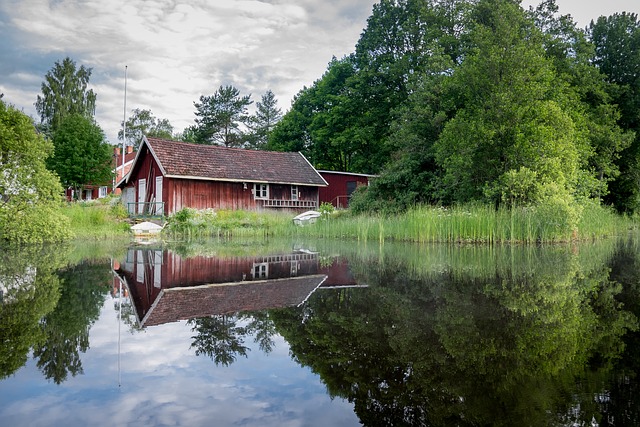You may know that wonderful feeling when garden plants grow well and bloom. However, sometimes things get out of our control, e.g., grounds were left unattended for quite a long time, and a garden can end up housing encroaching weeds, overgrown plants, and even uncontrolled perennials.

Unfortunately, at Thomsons Property Maintenance Company we know that even the most beautiful yards can turn into a mini jungle.
If you’ve never been much of a gardener but now want to try it, this post is for you.
We’ll provide you with a logical strategy where to start from and help you revive an overgrown garden quickly and with little fuss.
So, get your garden accessories & weed killers (e.g., best dandelion killer) ready, and remember that garden maintenance can be easy and enjoyable if you know a few good techniques!
Basic Tips for Clearing an Overgrown Garden FAST
We’ll start with basic recommendations on how to handle an overgrown garden. And remember, if you have the right mindset, attitude, and tools, it means that half the work is done.
- Never work between 12 and 3 p.m. – you’ll get tired quickly and may even feel bad since this is the hottest part of the day.
- Start your garden jobs by picking up all the rubbish, including sticks, stones, broken pottery, and other garden items.
- Mow the lawn – this should be one of the first steps since freshly cut grass will let you see much better what you need to do. Besides, a neat lawn will encourage you to work even harder.
- Work at a relaxed pace, instead of pulling all the weeds, get a single weed in one go.
- Ensure that the ground is wet before pulling out the weeds. This way, the process happens much faster and easier.
- Get proper garden tools – the process will be long and tiring without the right, quality accessories. What you may need? Secateurs, garden loppers, tree pruners, grubbing mattock, shears, safety gear (safety glasses, leather gauntlets, safety boots). When you finish with clearance, you’ll need these instruments for garden landscaping, making gear a brilliant investment.
Now when you know the basics, it’s time to learn quick and easy ways to relieve your wonderful garden of debris and weeds you definitely don’t need.
Determine Your Weed Strategy
Before you start your garden jobs, make a quick visual inspection of the space. This way, it’ll be easier to determine how to clear up an overgrown garden. It’s always best to start with weeds after their blooming stage when they are ready to seed.
Remove them before they’ll spread.
Continue with big weeds in bloom; you’ll clear up lots of space and it’ll make you feel you’re doing a superb job.
Finally, remove permanent weeds like brambles, shrub seedlings, poison ivy.
Clear the soil as deep as possible since there might still be some weed seeds left in the ground, it’ll make weeds grow back quickly.
After you are done with weeds, you can rearrange and replant your favourite flowers and vegetables.
Prune Shrubs And Trees
Now when you’ve fought and conquered the ground floor of the garden, it’s time to move up to the trees and bushes. They’ll look unaesthetic and become unhealthy if left to grow spun out of control.
For instance, prune forsythia, spiraea, honeysuckle, hydrangeas, and lilac early in the spring, and you can cut them as low as you wish. This way, they’ll have a chance to grow even better.
However, remember that we can’t treat all shrubs and trees in the same way, so you should follow proper guidelines for each plant. Viburnum or witch hazel, for example, can only be pruned every three years.
If you’re unsure or need help with this part of the process, you can always call in a specialist.
Establish Clear Lines
Sometimes your energy and work you’ve put in can go unnoticed, and that’s a shame! It can happen if the flowers and plants grow into each other. And even if you don’t have weeds anymore, the garden may still look a bit messy and unkempt. A good solution here is creating edges by putting an emphasis on the various areas where your flowers, shrubs, and trees grow.
Firstly, trim the grass back as much as possible.
Secondly, use pebbles or mulch to separate the plants from the ground; choose rich shades of mulch if you want your garden to stand out. Or opt for reddish-brown pebble, it looks classy and esthetically pleasing.
This colour comes in contrast with the green of the leaves and grass, making your garden just gorgeous.
If Plants Do Too Well
When plants grow too well, it may also become a problem, and lots of gardeners face this issue. It happens if you take good care of your garden, and plants begin to overgrow and spread into areas that have been designed for other plants and flowers. If so, it’s time to get them in line.
The simplest solution here is to cut overgrowing plants a bit, just prune some branches, leaves, and flowers. If it’s not an option for you, make sure they don’t lean over other plants by pulling them up.
Some gardeners complain about roots clumped together. This is a more serious issue, and you may need to dig plants up and get rid of one of them or, if it’s not too big, replant it to another place.
Experts tell that gardening has a relaxing and even therapeutic effect on people, and we totally agree with them! It’s a rewarding job!
We hope that our garden ideas and tips will help you make your yard an organised paradise.
If you’re a seasoned gardener and know how to garden for less, do share your experience with us! Write in the comment section!
- Tips To Reduce Household Waste - November 25, 2021
- What is Chemical Cleaning of Boilers? What to Know? - May 25, 2021
- How to Post Clean a House After Construction or Renovation? Checklist & Tips - May 18, 2021

